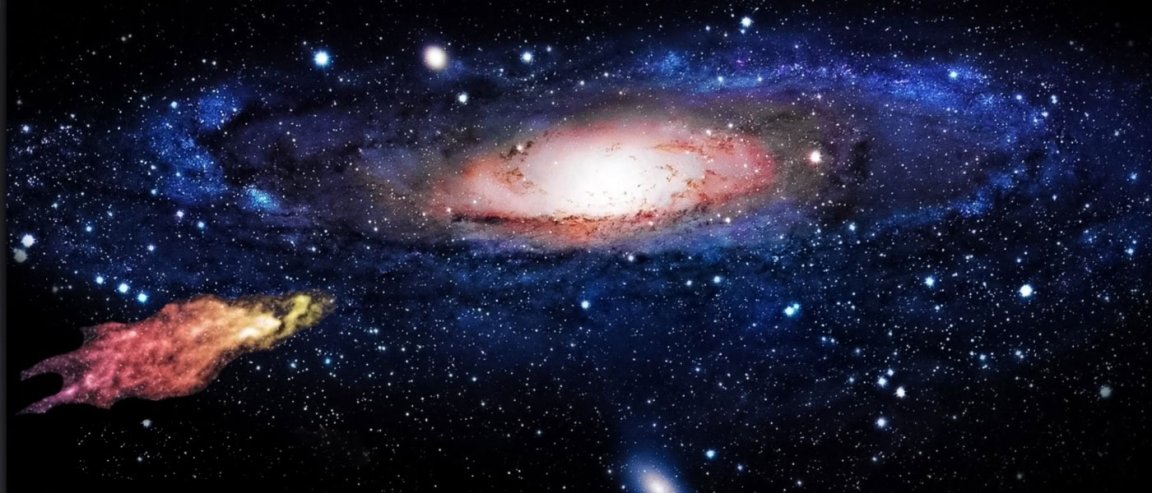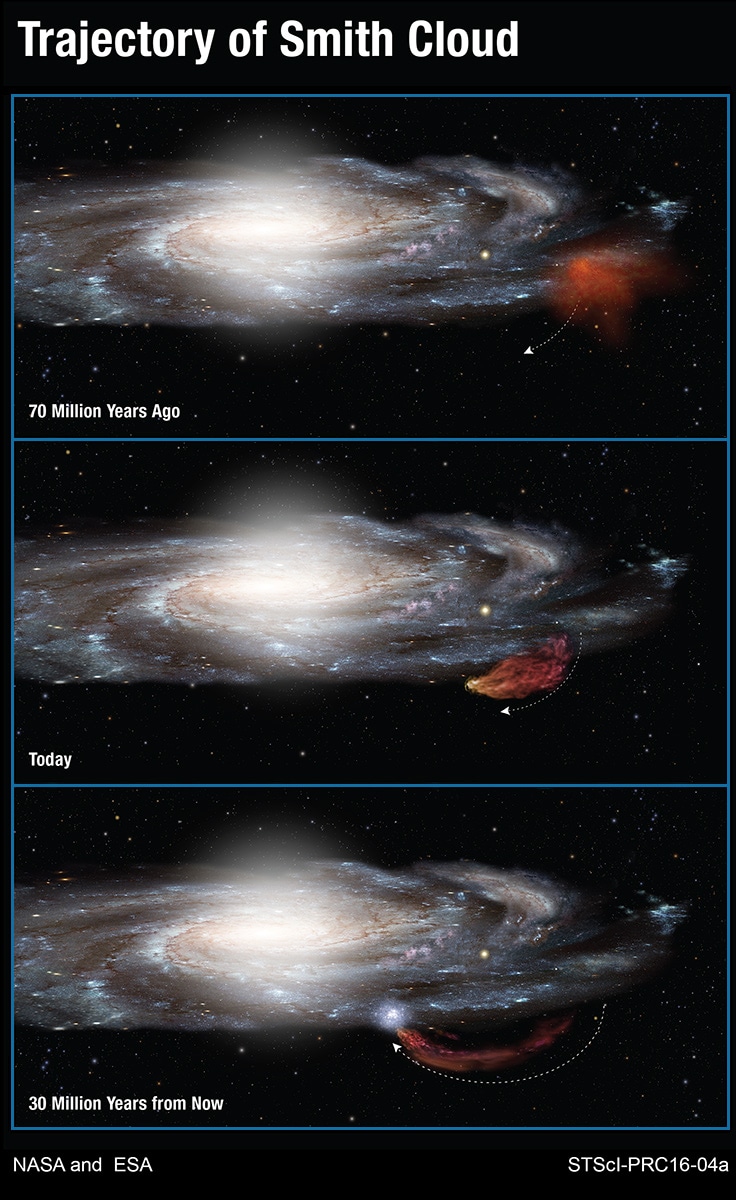
Save the Date
You’re all invited to an epic collision, right in our own galactic backyard, about 30 million years from now. A giant space cloud, moving at a rate of 1.1 million km/h (700,000 mph), is set on a collision course with the Milky Way, according to Hubble Space Telescope researchers.
Smith’s Cloud, a massive billow of gas made up mostly of hydrogen and heavier sulfur, measures 11,000 lightyears in length by 2,500 lightyears in width (a lightyear is around 9.5 trillion km). Discovered in 1963 by Dutch radio astronomer Gail Smith, it’s believed that the giant space cloud was formed some 70 million years ago.
Owing to high traces of sulfur gas, scientists think Smith’s Cloud probably originated from the Milky Way. However, no one seems able to explain how it was expelled out of our galaxy. Now, it returns with a bang.

Constant and cosmic
Let’s be clear, however: we’re not going to die from this collision — at least no one from Earth — because it’ll happen thousands of lightyears from us, at the very fringes of the Milky Way. Life (human or artificial) on Earth 30 million years from now will not suffer from this clash of clouds. Instead, they will enjoy a magnificent light show featuring the birth of 2 million stars.

It’s a stellar reminder of how evolution happens even at cosmic scales. Space Telescope Science Institute astronomer, and a leading Smith’s Cloud researcher, Andrew Fox explained in a statement:
“The cloud is an example of how the galaxy is changing with time. It’s telling us that the Milky Way is a bubbling, very active place where gas can be thrown out of one part of the disk and then return back down into another.”
“Our galaxy is recycling its gas through clouds, the Smith Cloud being one example, and will form stars in different places than before,” Fox added. “Hubble’s measurements of the Smith Cloud are helping us to visualize how active the disks of galaxies are.”